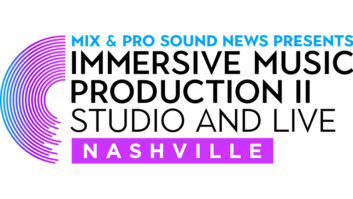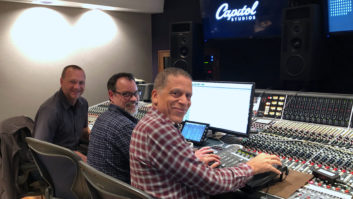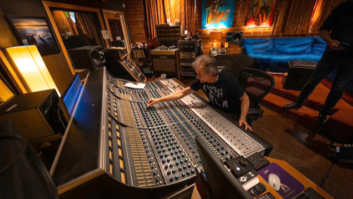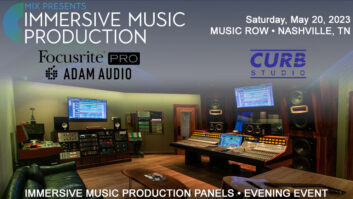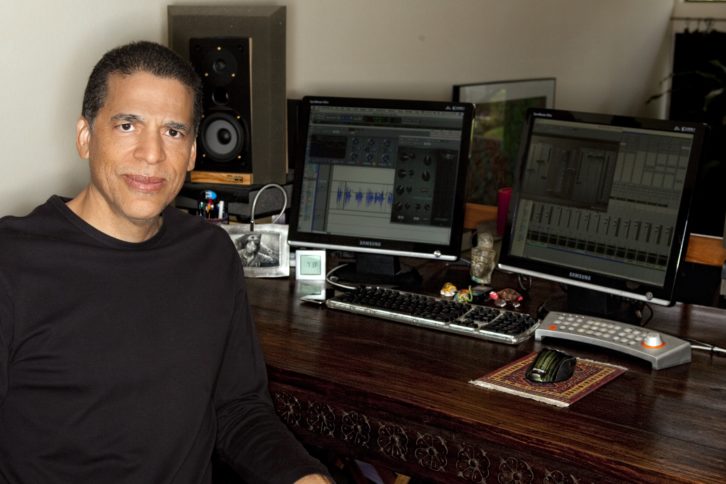
Though I am mostly known as an engineer/mixer of “records,” I have also recorded and mixed music for film, TV and theme parks over the years. I have seen delivery specs (level, channels and stems) change over time and have tried to stay current and look to what’s coming on the horizon. I have worked in surround formats specifically for music before, and it’s been fun to mix creatively without restrictions. I can say that mixing for Dolby Atmos Music takes that freedom to the next level.
I understand and accept the conditions of mixing for film, where music brings real emotional dimension to a scene. Of course, sometimes it is reduced to a background role when the soundtrack must yield the right-of-way to dialog, sound effects and whatever else the director feels is the sonic priority at any given moment. Mixing music-only projects in an immersive format demands a different mindset.
I am currently mixing to picture on a collaboration between director Reginald Hudlin and composer Marcus Miller. As in the last time the three of us worked together (Marshall, starring Chadwick Boseman), I am anchored to the screen, the image dictating the space available for music. At the same time, I recently remixed two songs in Dolby Atmos from Miller’s previously released projects. Working with Maurice Patist, President of PMC USA, we could use the space and the extra speakers’ full-range capability to create an exciting music-only experience.
I had first worked with Patist about 10 years ago, when we collaborated—along with Noel Lee of Monster Cable producing under supervision of the Miles Davis Estate—on a 5.1 surround presentation of Miles Davis’ Sketches of Spain for an AES Convention.
Flash-forward to April 2019, and Maurice, an engineer, hard-core jazz fan and an original champion of Dolby Atmos as a music format—asked if I would be interested in mixing Sketches in Atmos. I helped him reach out to the Davis estate; we contacted Vincent Wilburn Jr. and Erin Davis, who not only signed off on Sketches but also agreed to let us remix the legendary Kind of Blue!
Maurice, Capitol Studios Senior Engineer Steve Genewick and I secured 24/96k digital transfers from the original Ampex Model 300 half-inch, 3-track recording. The raw transfers were stunning when we brought up the faders. So the order of the day became: Do no harm. It would be a crime to add anything that might distract from these unbelievable performances. We panned our three tracks across the front of the room, the LCR, and experimented with different live and artificial chambers to add space to the performance.
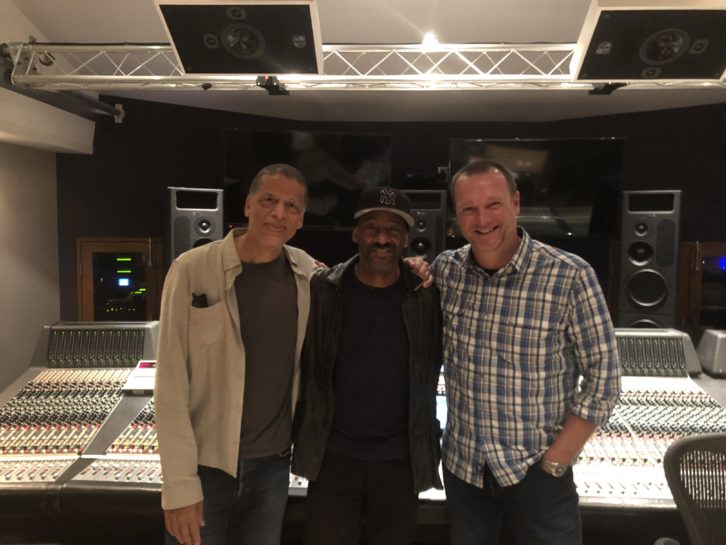
In the end we settled on re-amping the original three tracks with the “stereo” panning we created over a pair of speakers set up in Capitol Studio A’s live space. The mics were arranged with the intent to mimic the Atmos speaker array in Capitol Studio C, where we were mixing. After printing the mics back into our session, we then spent days adjusting levels.
Both Kind of Blue and Sketches of Spain were recorded in CBS/Columbia 30th Street Studios, New York City. The recording studio was approximately 97 feet long by 55 feet wide, with a 50-foot-high ceiling. The final picture within our Atmos mix is 100 percent “real,” where the front of the room is the recording from 1959 at 30th Street Studios, and the space surrounding the performance is Capitol Studio A.
Once again, with “music” projects to be remixed in Atmos, you have total freedom to utilize the space as you believe best suits the song. If you’re used to mixing music for film, you may have to close your eyes when listening and adjust your mindset to the freedom of mixing without picture.
Although I have lucky enough to be involved in the early days of mixing and listening to music specifically created for Dolby Atmos Music, I still have more questions than answers.
- Why do some Dolby Atmos rooms sound better than others?
- Why would I mix on speakers in Atmos Music that I would never use in my studio for a stereo mix?
- Where in the hell do you put the kick?!
- When is dynamic panning too much?!
- And what to you put in the LFE (nothing, everything, just a taste?)
It’s a format in its infancy, and we’re all still figuring it out. The best advice I was given came from Capitol’s Steve Genewick: Just mix the song.
The prime objective of a mixer does not change for the format. We are still servicing the artist’s performance, arrangements and composition. Miles’ “So What” is a great song in mono! That said, once we opened up the space and played it back in Atmos, I believe we gave it a bigger stage and the chance to be introduced to a new audience.
In previous channel-based surround music formats I never experienced the accurate, three-dimensional experience of music in a great-sounding space. When you listen to the Los Angeles Philharmonic at Disney Hall, you hear the height, width, detail and focus that acoustician Yasu Toyota and conductor Gustavo Dudamel create. I don’t know if we are there yet, but done right, Dolby Atmos Music gets us a lot closer to a total music experience.



